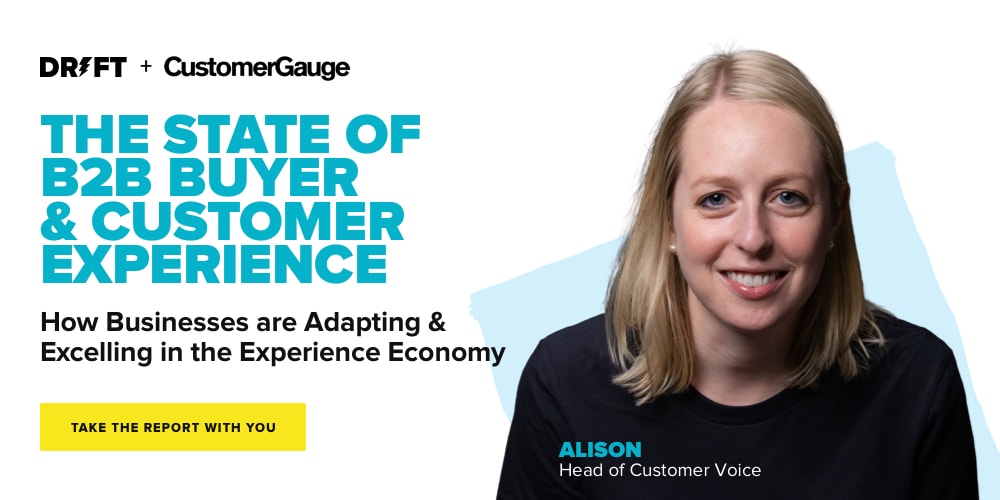There’s no way of avoiding it – consumers can be a demanding bunch. Expectations are changing all the time, and customers have come to assume a certain level of service. They expect that all brands should be highly attentive to their needs and that they should go the extra mile to ensure that they’re met.
If you’re running a business, this is something you can’t afford to ignore. Whether you’re selling B2B technologies such as business VoIP services or computer telephony integration products, or you’re selling handmade crafts on e-commerce platforms as a side hustle.
It’s important for you to actually listen to the feedback your customers are giving you – and act on it. Because whether or not you agree with the old adage that the customer is always right, you have to at least give the impression that you do.
The good news is that tending carefully to customers’ preferences and expectations can deliver real results in the long term. Customers who feel that a brand or business is looking out for them and genuinely cares about their satisfaction are far more likely to keep returning to that business. And, as we know, loyal, regular long-term customers are the bedrock of success and sustainability in business.
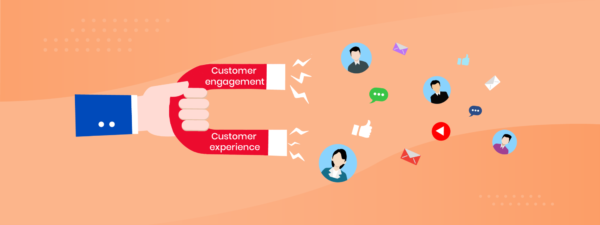
Source: Vtiger
You don’t have to have limitless resources at your disposal to make a customer feel valued. That’s just as well, because very few businesses do have such lavish resources to play around with. Some simple measures can help you reap real rewards. A personalized customer engagement strategy can help you enhance your conversion rate optimization – meaning more sales and higher revenue, giving that all-important bottom line the boost it needs.
Better still, it’s possible to have an effective, personalized customer engagement strategy that’s cost-effective. In fact, it’s a great way of putting limited resources to efficient work.
There are all sorts of other methods you can use – such as affiliate marketing – to boost your business’s profile and get customers coming in. But if you’re going to keep those customers coming back time after time, you need to make them feel valued and appreciated. So what does it mean to have a personalized customer engagement strategy, and how can you make it work both for your business and its customers?
Here, we’ll list a range of top tips to help you make the most efficient use of yours (so that you keep consumers engaged and foster a lasting sense of loyalty).
1. Crowdsource, Crowdsource, Crowdsource
A simple but incredibly effective method of customer engagement is crowdsourcing. In other words, ask consumers what they think about what you do and if they have any ideas about where you might improve your offering.
You’d be amazed (well, probably) at how much customers love giving their opinions, and how many of those opinions they have. Your customer base is bursting with ideas, so it makes perfect sense to tap into them. It pays to really listen to your customers, as they may see things that you don’t.

Source: SoftwareSuggest
So, how might you go about crowdsourcing insights and ideas from your customers? There are a number of ways through which you can do it. For example, you could share a product development strategy on social media and ask people for their input there. If you have a good following on your social accounts then you should be in a good position to get plenty of responses.
Perhaps you’ve got some new office technologies or collaboration tools in the works and you want to see how your clients might respond to them, or find out what they’d look for from such products. This is a good way of obtaining relevant feedback.
2. Stay on Top of Social
Following on from the last point, it really is important to engage consistently with consumers via social media. As we’ve discussed, people have come to expect a lot from their favorite brands in recent years. In particular, they expect that they should be able to engage with those brands on social networking sites. There’s one thing above all that you need to remember here: if you aren’t making the effort to communicate with consumers and clients via social, you can rest assured that at least some of your competitors will.
The reality is that a lot of people spend a lot of time on social media. So, if you’re looking to engage with existing customers and reach out to new ones, it’s a good place to be. But there’s not much point having a social media presence if you don’t use it – it needs to be more than a kind of placeholder.
To customers, a business that either doesn’t have a social media presence or has social accounts that are largely inactive may look untrustworthy or simply lethargic. Either way, it doesn’t give a good impression.
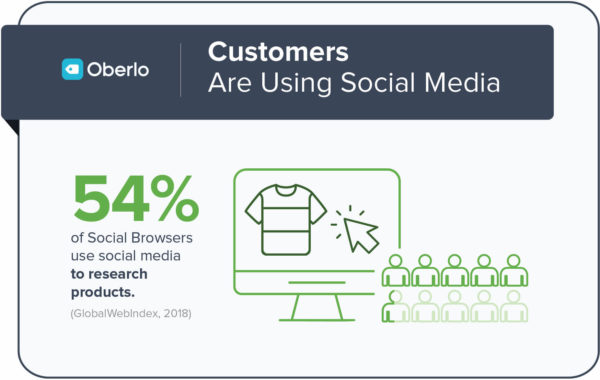
Source: Oberlo
But another great thing about social media is that it provides you with a direct line to your customers. Thus helping you to make them feel valued. If a customer reaches out to you on social, you must make sure you get back to them in a timely manner. Keep on top of your direct messages and your Twitter mentions.
What’s more, other customers will see you taking the time to deal with customer queries in a timely and attentive manner. This will give them a positive impression as well. It creates a virtuous circle in that respect.
3. Reward Your Customers Generously
One proven, time-honored way of getting customers to come back to your business regularly is to cross their palms with gold. In other words, offer them direct incentives to do it. Sure, you don’t have to be a genius to work out that consumers like discounts and freebies. But so what? It doesn’t hurt to remind yourself of this every now and again!
Sometimes customer engagement isn’t about doing the most outlandish or elaborate thing; the simple approach often works just as well, if not better, in providing the best possible customer experience.
You must remember that landing page conversion rates are generally pretty low – 2 or 3% on average. So what can you do to drive those rates higher? You can start by offering deals and discounts to customers based on their browsing history (this is where customer data comes in exceptionally handy).
You don’t need to blow your rivals out of the water with huge discounts across the board. A more targeted approach like this not only delivers the goods by incentivizing customers to buy, but it also provides them with deals that are directly relevant to their needs. This is a more surgical, less scattershot approach.
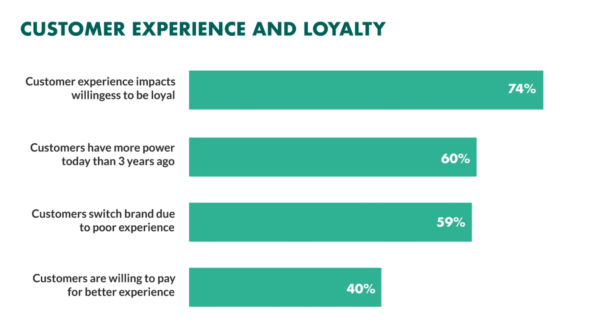
Source: SuperOffice
4. Be Gracious in the Face of Criticism
Any seasoned entrepreneur knows that every now and then, you can expect to cop some flak from customers. This is just an inevitable part of running a business – as the old saying goes, you can’t win them all. The most important thing is to maintain a level head and respond graciously to whatever negative feedback you receive.
The worst thing you (or a member of your team) can do is lose your cool in the face of criticism. You absolutely must ensure that those team members who receive complaints are well-trained in holding their nerve when dealing with customer feedback.
Social media tends to exacerbate this kind of thing, as there’s always the temptation to stage a performance in front of an audience. This is another reason why it’s so important to respond promptly and politely. Make sure that customers aren’t dismissed with generic responses: their problems must be dealt with in a personalized manner.
This is the key to good customer engagement, namely that the needs of the individual must be prioritized at all times. Generic responses will risk inflaming the situation further.
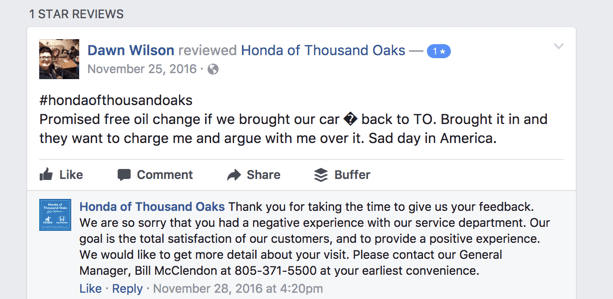
Source: Broadly
It’s also essential to remember that negative feedback is sometimes justified and makes important points. Take this criticism on board. It may be that your existing connected workforce arrangements need tweaking in order to deal with customer problems more effectively. Or perhaps more efficient workforce optimization might help.
5. Create Target Customer Profiles
You only have a limited time to grab the attention of your customers and ensure they continue to progress along the sales funnel, all the way to completing a purchase. This is why first impressions are so important.
If your website is easy for visitors to navigate so that they can find what they want, and if they have the right incentives, you should be in a good place to drive those conversion rates higher. Your website, therefore, has to be designed with the customer in mind, first and foremost. Functions such as chatbots can help customers find what they want quicker, thus driving conversion rates higher.
When designing your site around the customer’s needs, however, it helps if you know precisely which kind of customer (or rather, customers) you’re targeting. This is why it’s a good idea to create profiles of typical target customers.
Think about what demographics you’re aiming for, and what this category of customer might want from your business. Use analytics to inform this – this data should give you a better idea of where your customers are coming from. As well as what they’re searching for, and how long they spend on different parts of your site. This will allow you to tweak your offering accordingly, so that it more closely matches customer preferences.
John Allen, Director, Global SEO at RingCentral, a global UCaaS, VoIP and call center solutions provider. He has over 14 years of experience and an extensive background in building and optimizing digital marketing programs. He has written for websites such as Bricsys and SendInBlue.





